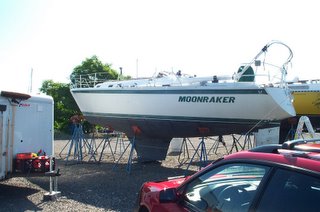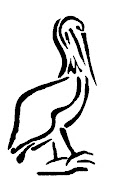The UK is a spectacular place. That's not just hyperbole. Think about this: They were a coherent (mostly) society 1000 years before us. They've survived their horribly violent beginnings, their rise to world domination, and drift away from same but remaining as a world power - something no other society has successfully done in history. Most are violently finished after their rise to power (see the Greeks, Egyptians, and Romans. Germany. USSR.). This has had the obvious effect of creating a nation of reasonable people. And friendly!
The English government seems complicated but apparently very resistant to subversion. Unlike our which is, most people feel, so corrupt as to no longer be representative. Before you flame me with your indignation, I remain an American and I do love my country. However, you'd have to be rabidly blind to see that special interests actually run the country via political action committees, election donations, and so forth. There's a lot to love about America, but there's also a great deal to be very, very worried about.
Anyway, this isn't a rant about the accelerating loss of rights here. It's really about the UK.
This is not to say they don't have problems - they most certainly do, but their approach to them seems, well, more reasonable. And they seem far more tolerant.
But all that aside. Here's the thing: natural beauty is appreciated in the United States mostly because of size. I mean, the Grand Canyon is beautiful because of it's grandeur, it's massive - it's, well, grand. The Grand Tetons, Rocky Mountains, Yellowstone, Great Plains, the bad lands - they are all beautiful in their wildness, their ability to humble, and their sheer size.
Not so the UK. Remember it's slightly larger than New England. That's pretty big, but it's been in use continuously by one society or another (or more) for over 5,000 years. And they've been taking care of it. So the natural beauty comes more from the obvious care than from the expanse. It's just a different sort of natural beauty, not better or worse - but for the most part it can be beheld in one look. There's something extraordinarily satisfying about that.

For instance, since England was almost denuded of trees because of the need to build ships and produce charcoal. Trees are precious; it's apparent because almost all trees over about 50 years show signs of pruning and shaping. Estates hire people just to manage their forests.
When you look to fields, you can see how they have been cared for. The beautiful shapes, and the perfection of form!
There are other incredible sights, too - here a house from the 1700's is considered very old, and all things considered it is. But in the UK, the place is just getting the lived in look! They were building places to last (and still are because lumber is so expensive). My brother-in-law mentioned houses built in the 1940's are still considered 'new' houses!

We went for a walk on a path along the Clwyedog River in North Wales. You may notice the river isn't all that big. In our standards, it's a healthy stream. It's an example of what I was saying before about being able to grasp the natural beauty in one exquisite look.
Yet it was a source of power for mills and furnaces and what have you when the US was just getting started!
We started at Bersham Iron Works, which is also the Bersham Heritage Centre, and ended up at Nant Mill, about a mile or so walk. In that mile, aside from the two places I mentioned were, in addition to the mill races, a 'roman steps', a beautiful waterfall, and an ancient bridge. And the path, although muddy, was very well tended.
Walking is very popular there. Even when it was frost cold (unusual for the western part of the UK) we met other walkers with their dogs and children. All with a smile and a "Good morning!" or "Good afternoon!"

In the US, it would be very unusual to see these sorts of sights without long periods of travel between. There, we're talking about ten minutes of strolling. Power walk, and you're by this stuff before you know it! You just can't help stopping and exploring and even touching some of these things. The sense of antiquity, of history, is almost overwhelming.
You can't hardly swing a dead cat without hitting something of historical significance. Really. I say this, of course, not having a dead cat to swing, but had I had one and the room to swing it, you could guess the results.
Well, we went for lunch on Boxing Day (which, oddly enough has nothing to do with pugilism or
 the Boxer Rebellion but is the day after Christmas see Wikipedia's Boxing Day) to a place called Frogg Manor, a real manor house that is now an inn and restaurant - the owner seems to do everything. He was vacuuming when we came in, was the social host, and as he is also a spectacular chef, prepared our meals. His attentions were friendly and welcome. A bit of a nut, too.
the Boxer Rebellion but is the day after Christmas see Wikipedia's Boxing Day) to a place called Frogg Manor, a real manor house that is now an inn and restaurant - the owner seems to do everything. He was vacuuming when we came in, was the social host, and as he is also a spectacular chef, prepared our meals. His attentions were friendly and welcome. A bit of a nut, too.If you're ever in Chester, UK, best go there. You will be very happy you did!
One of the bad things about the UK is that they use pounds like we use dollars. This is very disturbing, especially in restaurants. A meal in a pub for three here would cost $50 or $60. I'm talking about a hamburger and beer each. It's still 50 or 60 over there but in pounds, the dollar value is like 1.7 times 0r $85 to $102. So you have to think about that some. It's really the only downside of the UK.
Well, there's one more thing. If you can avoid Heathrow Airport do it. Really. Unless you like long walks back and forth to places and queueing (lines). If you're just flying to London, then ok. But if you're going on to other places in the UK, be prepared to spend at least an hour and a half getting through customs and security, and traveling between terminals. Oh, and the signage isn't too good either. On the good side, British Airways usually holds planes for connections. And everyone there was unfailingly friendly and helpful.
Well, I have to prepare my new mainsail for putting on the boat Sunday, Jan 1, so that's what I'm off to now. If you get the chance, do go to the UK. It's spectacular!
See you on the water in the New Year!























